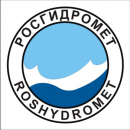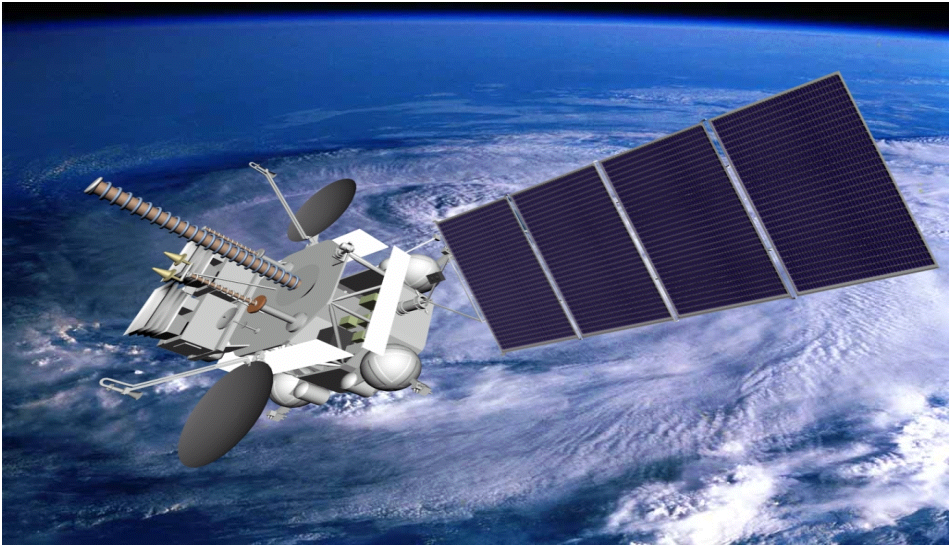Right as one pencil shaped white rocket powered by kerosene and liquid oxygen is gearing up for yet another milestone launch, another is heading into what might be its swansong today.
The Zenit rocket, the most advanced one developed during the Sovier era and one of the most iconic rockets of the world (thanks to Sea Launch), has suffered from reliability issues, faced much more competitive challengers on the market, and political issues between its builders. Earlier hopes of finding it a place in the launch service market has been dashed, and with it just celebrating its 30th anniversary of first flight, the future of one of the world's important rocket looks very grim.
In fact, with only 3 assigned flights left and 2 of them in uncertain status, today's Zenit launch may well be its 83rd and last.
Flying on it today from pad 45/1 in Baikonur (first use of the pad since August 2013) is Russia's newest weather satellite in geostationary orbit. Elektro-L #2 is a replacement for the similar Elektro-L #1 launched in January 2011, which has suffered from instrument problems and has been mostly unable to perform its major tasks. This satellite uses the same platform as the Spektr-R radio astronomy observatory and the ill-fated Phobos-Grunt, and seems to be the source of problems with #1. Hopefully developer Lavochikin can iron out the issues by now, or else they might face a grim future as well!
Good luck and godspeed!



Launch location:
Baikonur Launch pad no. 45/1 45°56'35.87"N, 63°39'10.83"E

Launch dates and times:
{colsp=6}Launch times
Time Zone |
{colsp=6}
Live Coverage Of The Launch:
PAYLOAD
Elektro-L #2 meteorology satellite:

Spacecraft Overview
Elektro-L is a second generation geostationary weather monitoring spacecraft, built and operated by Russia.
The spacecraft is designed to have modular composition. It consists of Service Systems Module and Payload Module. The former is represented by Navigator universal bus, which is developed by Lavochkin Space for use as a core in various spacecraft, such as Spektr series orbiting observatories.
Mass of the spacecraft in operational mode is about 1500 kg. Its effective lifetime should be no shorter than 10 years.
Electro-L is designed as an elevated operational compatibility spacecraft. When assembling and electric tests of the spacecraft are done at Lavochkin Centre, the satellite is delivered to a cosmodrome virtually ready to fly. This technology allows for significant cost savings on launch preparatory works.
{colsp=2}Summary
Parameter | Value
Characteristics|

Band #|Wavelengths (mkm)|Singal/Noise ratio or bolometric resolution|Usage
1,2|0.5 – 0.65,0.65 – 0.8|>10|Cloud observations, tracer cloud tracking for wind direction determination, aerosol observations
3|0.8 - 0.9|>7|Watching clouds of small sizes
4|3.5 - 4.01|<0.35°K|Detecting low clouds, night ocean and land temperature
5|5.7 - 7.0 |<0.75°K|Water vapour watching, wind determination, semi-transparent clouds
6,7|7.5 – 8.5, 8.2 - 9.2|<0.28°K|Observations of semi-transparent layered clouds
8|9.2 - 10.2|<1.5°K|Monitoring of Ozone concentration, wind in low stratosphere
9,10|10.2 - 11.2,11.2 - 12.5|<0.3°K|Ocean and land temperature determination, amount of precipitation over oceans
|

Launch Vehicle:
{colsp=2}Characteristics
 |
|
{colsp=2}

The vehicle's reliability statistics according to http://www.spacelaunchreport.com/log2015.html#rate:
Elektro-L Ascent Profile
Orbit #|Orbit Nature|Perigee h, km|Apogee H, km|Inclination
1|Parking|167.1|554.1|51.35°
2|Intermediate|280|4306|50.4°
3|GEO-transfer|338|35911|48.6°
4|Target GEO|35424.9|35793|0.5°

Elektro-L #2 Ascent Timeline
Event|Time rel lift-off|Time UTC|Comment
Liftoff|00:00:00|13:45:33|
1st/2nd Stage Separation|00:02:25|13:47:58|
Payload Fairing Separation|00:05:17|13:50:50|
2nd stage Shutdown|00:08:34|13:54:07|
2nd Stage/Fregat Separation|00:08:35|13:54:08|
Fregat 1st Burn Ignition|01:14:34|15:00:07|
1st Burn Shutdown|01:22:59|15:08:32|1st Burn's Duration 00:08:25
APT Jettison|01:23:36|15:09:09|
2nd Burn Ignition|03:26:17|17:11:50|
2nd Burn Shutdown|03:37:15|17:22:48|2nd Burn's Duration 00:10:58
3rd Burn Ignition|08:46:35|22:32:08|
3rd Burn Shutdown|08:55:23|22:40:56|3rd Burn's Duration 00:08:48
Spacecraft Separation|08:57:53|22:43:26|
Weather forecast for Baikonur, Kazakhstan on December 11, 2015 (7 p.m.)
Some clouds this evening will give way to mainly clear skies overnight. Low -4C. Winds SW at 10 to 15 km/h.
Time|Temps|Dew Point|Relative Humidity|Precip|Snow|Cloud cover|Pressure|Wind|Weather
7 PM|1°C|-3°C|77%|3%|0%|84%|1037 hPa|11 km/h SW|
 Overcast
Overcast
References
http://www.federalspace.ru
http://www.mcc.rsa.ru/electra_2.htm
http://tvroscosmos.ru
http://www.tsenki.com
http://www.laspace.ru
http://planeta.infospace.ru/electro/
http://rocketpolk44.narod.ru
http://www.yuzhmash.com
http://www.yuzhnoye.com
http://forum.nasaspaceflight.com
http://www.novosti-kosmonavtiki.ru
http://www.spacelaunchreport.com
http://www.russianspacweb.com
The Zenit rocket, the most advanced one developed during the Sovier era and one of the most iconic rockets of the world (thanks to Sea Launch), has suffered from reliability issues, faced much more competitive challengers on the market, and political issues between its builders. Earlier hopes of finding it a place in the launch service market has been dashed, and with it just celebrating its 30th anniversary of first flight, the future of one of the world's important rocket looks very grim.
In fact, with only 3 assigned flights left and 2 of them in uncertain status, today's Zenit launch may well be its 83rd and last.
Flying on it today from pad 45/1 in Baikonur (first use of the pad since August 2013) is Russia's newest weather satellite in geostationary orbit. Elektro-L #2 is a replacement for the similar Elektro-L #1 launched in January 2011, which has suffered from instrument problems and has been mostly unable to perform its major tasks. This satellite uses the same platform as the Spektr-R radio astronomy observatory and the ill-fated Phobos-Grunt, and seems to be the source of problems with #1. Hopefully developer Lavochikin can iron out the issues by now, or else they might face a grim future as well!
Good luck and godspeed!




Launch location:
Baikonur Launch pad no. 45/1 45°56'35.87"N, 63°39'10.83"E

Launch dates and times:
Time Zone |
Australia - Sydney/AEDT
|
Baikonur / UTC+6
|
Moscow / MSK/
|
Universal / UTC
|
Washington / EST
Launch time (Primary):
|
00:45:33
|
19:45:33
|
16:45:33
|
13:45:33
|
08:45:33
on:
|
Dec. 11, 2015
|
Dec. 11, 2015
|
Dec. 11, 2015
|
Dec. 11, 2015
|
Dec. 11, 2015
{colsp=6}
[highlight][eventTimer]2015-12-11 13:45:33?before|after;%dd% Days %hh% Hours %mm% Minutes %ss% Seconds %c%[/eventTimer] Elektro-L #2 Launch[/highlight]
Live Coverage Of The Launch:
- TSENKI Video Streams: http://www.tsenki.com/broadcast/broadcast/ - coverage starts at 11:45 UTC
PAYLOAD
Elektro-L #2 meteorology satellite:

Spacecraft Overview
Elektro-L is a second generation geostationary weather monitoring spacecraft, built and operated by Russia.
The spacecraft is designed to have modular composition. It consists of Service Systems Module and Payload Module. The former is represented by Navigator universal bus, which is developed by Lavochkin Space for use as a core in various spacecraft, such as Spektr series orbiting observatories.
Mass of the spacecraft in operational mode is about 1500 kg. Its effective lifetime should be no shorter than 10 years.
Electro-L is designed as an elevated operational compatibility spacecraft. When assembling and electric tests of the spacecraft are done at Lavochkin Centre, the satellite is delivered to a cosmodrome virtually ready to fly. This technology allows for significant cost savings on launch preparatory works.
Parameter | Value
Working Orbit:
|
GEO
Orbital Location:
|
77.8° East
Coverage:
|
Indo-Pacific hemisphere of Earth
ApA at separation:
|
35793 km
PeA at separation:
|
35429.4 km
Inc at separation:
|
0.5°Elektro-L #2
Parts diagram:
|

Customer:
|- Russian RosHydroMet Weather and Environmental Monitoring Agency
Prime contractor:
|- Lavochkin Association (NPO)

Platform:
|- Navigator
Mass at Separation:
|- 1855 kg
Dry Mass:
|- 1591 kg
Stabilization:
|- 3 axis stabilized
Dimensions:
|- ?
Batteries:
|- ?
Primary Meteorology Payload:
|MSU-GS (Multispectral Imager)- Working conditions: Sun elevation 10-90°, albedo 0.07-0.9, object contrast 0.2-0.7
- Imaging zone angular width: 20°x20°
- Observed spectrum bands: 10, ranging fro, 0.5 to 12.5 mkm (see band breakdown below)
1,2|0.5 – 0.65,0.65 – 0.8|>10|Cloud observations, tracer cloud tracking for wind direction determination, aerosol observations
3|0.8 - 0.9|>7|Watching clouds of small sizes
4|3.5 - 4.01|<0.35°K|Detecting low clouds, night ocean and land temperature
5|5.7 - 7.0 |<0.75°K|Water vapour watching, wind determination, semi-transparent clouds
6,7|7.5 – 8.5, 8.2 - 9.2|<0.28°K|Observations of semi-transparent layered clouds
8|9.2 - 10.2|<1.5°K|Monitoring of Ozone concentration, wind in low stratosphere
9,10|10.2 - 11.2,11.2 - 12.5|<0.3°K|Ocean and land temperature determination, amount of precipitation over oceans
- Per pixel resultion in nadir: channels 1-3 (visible light) no more than 1 km/pix; channels 4-10 (IR light) no more 4 km/pix.
- Pixels per scan line for 0.5-0.8 mkm bands: 12 576
- Pixels per scan line for 3.5-12.5 mkm bands: 3 144
- Scans in one frame: 34
- Range of measured temperatures, K: 220 - 340
- Time to obtain one frame, at 0.5-0.8 mkm: <= 15 mins
- Time to obtain one frame, at 3.5-12.8 mkm: <= 2 mins
- Full information output bitrate, kbit/s: 3150 - 4000
- Working mode: session-like, with one session in 30 mins in standard and once in 15 mins in emergency mode
- Powering up time: 5 minutes
- Imaging method: mirror at discrete steps
- Power consumption, W: <= 200
- Instrument dimensions, mm: 875 х 520 х 450
- Instrument mass, kg: <= 88
Space Weather Payload:
|GGAK-E (Space Environment Prober) provides the following measurements:- Integral Solar Constant in energy range 0.2 - 100.0 mkm
- Differential Energy Spectrae of electrons and protons in energy range 0.05 - 20.0 kEv
- Electron flux density in ranges: 0.03, 0.1-0.7, 2.0-4.0, 6.0; > 6.0 MEv
- Proton flux density in ranges: 0.5, 3.0-10.0, 30.0, 50.0, 100.0, 300.0; >300.0, >600.0 MEv
- Soft X-Ray Solar radiation intensity in range 3.0-10.0 kEv
- UV Solar radiation intencity in resonance line HL-alpha (121.6 nm)
- Triple-orthogonal axes magnetometry (up to 300.0 nT)
Information Payload:
|BSSD is an onboard data processing system with the following functions:- Accumulation of data from MSU-GS
- Accumulation of data from GGAK-E
- Accumulation of operational information from spacecraft systems
- Storage of the data
- Replaying and transformation of the data for transmitting over the radio link
Radio Communication Assembly:
|Provides for the following functions:- Downlinking imagery information over 7.5 GHz band at 15.26 Mbit/s (single-band phase modulation)
- Downlinking space environment readings over 1.7 GHz band at 2500 bit/s
- Uplinking meteo information from autonomous surface platforms over 401-403 MHz band, from LEO satellites at 470 MHz, and their downlinking over 1.7 GHz band in phase modulated form.
- Relaying processed Hydrometeorology and Space Weather data (in HRIT, LRIT messages over 8.2 GHz uplink / 1.7 GHz downlink; in plain form at 15.36 Mbit/s over 8.2 GHz uplink / 7.5 GHz downlink)
- SARSAT distress calls relaying (over 406 MHz uplink, 1.54 GHz downlink)
- Uplinking and downlinking at 8.2 and 7.5 GHz are carried out via targetable high-gain antennae.
Life time:
|- 10 years
|
Launch Vehicle:

Zenit-3SLБФ (or Zenit-3F) / Fregat-SB
Prime contractor:
|- Yuzhmash (A.M. Makarov Yuzhny Machine-Building Plant) - Ukraine

GRAU Index:
|- 11K77
Height:
| 58.7 m with upper stage and payload fairing
(figure is for Z-3SLБ)
Diameter:
| max 4.1 mLiftoff mass:
| 473 metric tonnes
(figure is for Z-3SLБ)
Payload mass:
| ~13.7 tonnes at LEO1st stage:
|- 1 X RD-171 engine
- Empty 33.9 tonnes
- Propellants 318.8 tonnes (RG-1 Kerosene and LOX)
- Thrust in vacuum 7 908 kN
- Thrust at sea level 7 259 kN
2nd stage:
|- 1 X RD-120 engine + 1 X RD-8 vernier engine
- Empty 9.3 tonnes
- Propellants 80.6 tonnes (RG-1 Kerosene and LOX)
- Thrust in vacuum 834 + 78 kN
Upper Stage:
|

- GRAU Index: -
- Common Name: Fregat-SB (meaning Frigate)
- Designer & Manufacturer: Lavochkin Association (NPO)
- Dimensions: Length 2.4 m, Diameter (max) 3.875 m
- Empty Mass 1.05 tonnes
- APT Empty Mass 360 kg
- Propellants 7100 kg max
- Main Engine: 1 X S5.92
- Thrust in vacuum 2.0 tonnes of force (full power)
- Thrust in vacuum 1.4 tonnes of force (small power)
- ISP 333.2 s
Payload Fairing:
|- Diameter 4.1 m
- Length 10.4 m
The vehicle's reliability statistics according to http://www.spacelaunchreport.com/log2015.html#rate:
Code:
================================================================
Vehicle Successes/Tries Realzd Pred Consc. Last Dates
Rate Rate* Succes Fail
================================================================
Zenit 3F/FregatSB 2 2 1.00 .75 2 None 2011-Elektro-L Ascent Profile
1|Parking|167.1|554.1|51.35°
2|Intermediate|280|4306|50.4°
3|GEO-transfer|338|35911|48.6°
4|Target GEO|35424.9|35793|0.5°

Elektro-L #2 Ascent Timeline
Liftoff|00:00:00|13:45:33|
1st/2nd Stage Separation|00:02:25|13:47:58|
Payload Fairing Separation|00:05:17|13:50:50|
2nd stage Shutdown|00:08:34|13:54:07|
2nd Stage/Fregat Separation|00:08:35|13:54:08|
Fregat 1st Burn Ignition|01:14:34|15:00:07|
1st Burn Shutdown|01:22:59|15:08:32|1st Burn's Duration 00:08:25
APT Jettison|01:23:36|15:09:09|
2nd Burn Ignition|03:26:17|17:11:50|
2nd Burn Shutdown|03:37:15|17:22:48|2nd Burn's Duration 00:10:58
3rd Burn Ignition|08:46:35|22:32:08|
3rd Burn Shutdown|08:55:23|22:40:56|3rd Burn's Duration 00:08:48
Spacecraft Separation|08:57:53|22:43:26|
Weather forecast for Baikonur, Kazakhstan on December 11, 2015 (7 p.m.)
Some clouds this evening will give way to mainly clear skies overnight. Low -4C. Winds SW at 10 to 15 km/h.
7 PM|1°C|-3°C|77%|3%|0%|84%|1037 hPa|11 km/h SW|
References
http://www.federalspace.ru
http://www.mcc.rsa.ru/electra_2.htm
http://tvroscosmos.ru
http://www.tsenki.com
http://www.laspace.ru
http://planeta.infospace.ru/electro/
http://rocketpolk44.narod.ru
http://www.yuzhmash.com
http://www.yuzhnoye.com
http://forum.nasaspaceflight.com
http://www.novosti-kosmonavtiki.ru
http://www.spacelaunchreport.com
http://www.russianspacweb.com
Last edited:





